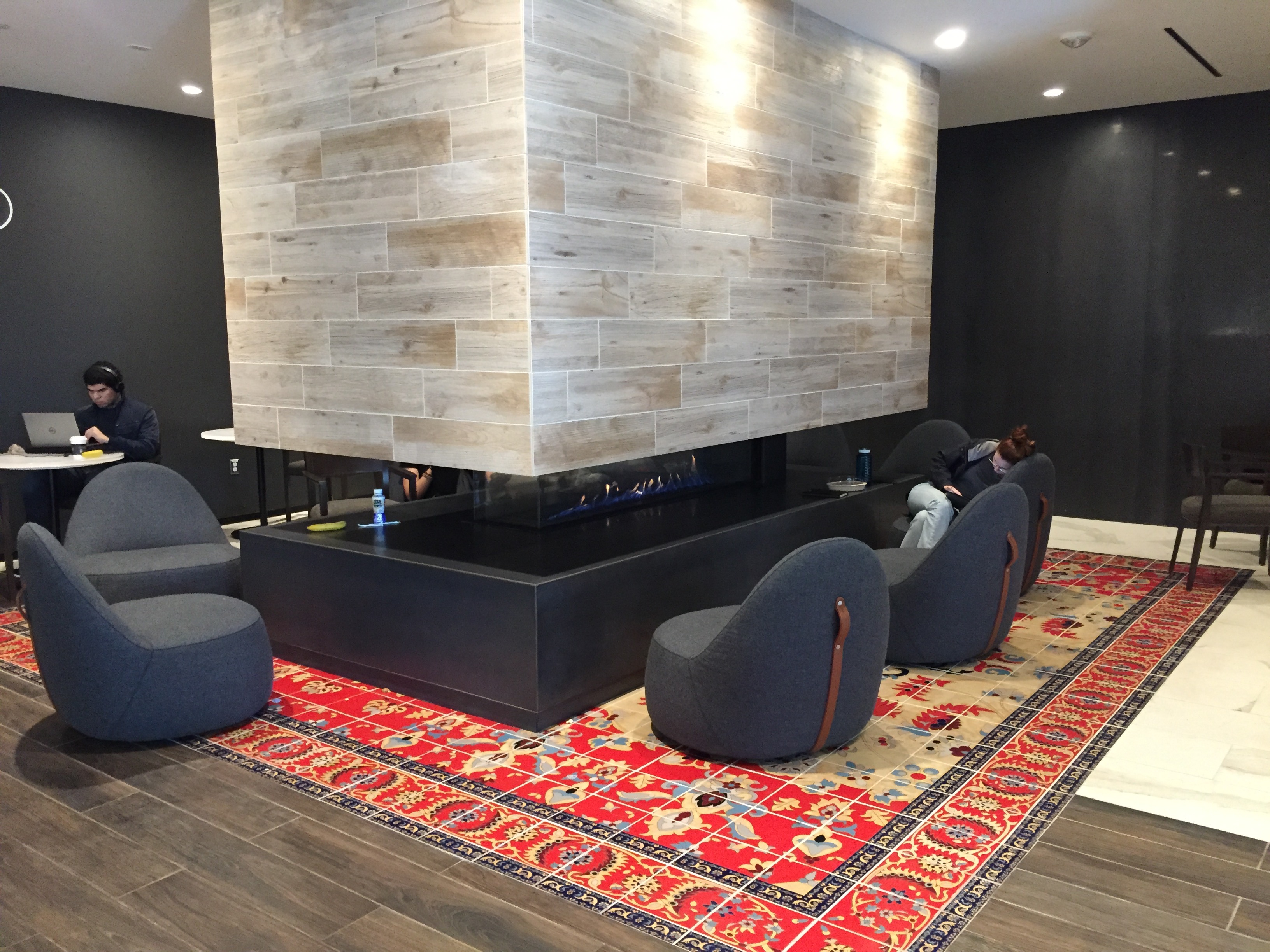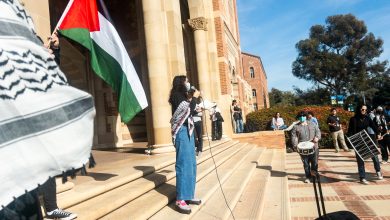Hedrick Study Raises Concerns Over UCLA’s Priorities

Photo by Laine Gruver
During the Fall 2016 quarter, UCLA students living on the Hill were excited about the extravagant new study space that opened in January of 2017. Hedrick Study was advertised as a new, convenient study space for residents, offering private study rooms, cozy seating, and an all-day eatery. But at the same time as the grand opening, UCLA workers were on strike for fairer working wages, shedding light on the fact that the university needs to work out some ethical budgeting issues. What does this say about UCLA’s priorities?
The construction of Hedrick Study was allotted a budget of $9.1 million. Hedrick Study is undoubtedly the most extravagant of the Hill’s dining and study services. The space boasts a silent study room with a galaxy pictured on the ceiling, green juices and kombucha on tap, crepes, and the frequently criticized $800,000 decorative table in the entrance, infamous for its extreme aesthetic appeal despite a lack of usability.
For monetary reference, other construction projects with similar budgets to that of Hedrick Study include the entire LaKretz Hall building, completed in 2005, and the CNSI-BSL3 Laboratory, a biomedical laboratory designed to ensure security in the analysis of infectious disease samples. These projects could be argued to have a larger impact than Hedrick Study for a similar price, particularly in the sense of academic advancement, which should be UCLA’s first priority.
Although the decorative table was donated, the generous budget still poses the question of whether or not the money could have been put towards a more productive cause. Unionized workers were on strike for better wages amongst other issues such as violations of state labor laws and unfair labor practices.
The very fact that these two events coincide raises the concern that the university favors more cosmetic and less necessary improvements to the school rather than properly paying the workers who keep things running. When asked about the nature of Hedrick Study and the workers’ strike, first-year political science student Erin Healy agreed, and also brought up the idea that other areas on campus need renovation.
“I think it’s a great place to study but also I feel like some of the lecture halls are in pretty poor conditions and some of the money they used at Hedrick Study was to buy really fancy things and could have gone to other places [instead],” she said. “I do think that it’s interesting how there are workers protesting for better living wages when UCLA opened a multi-million dollar room for students to sit in and read books.”
UCLA renovated 11 classrooms over the summer, including three of the large lecture halls in Young Hall, and Moore 100. Renovation at UCLA is a never-ending process because of the campus’s large size, and the diverse amount of programs the school offers. It would be impossible for all of the buildings on campus to be completely flawless and modernized, but the question can be raised as to which renovations deserve priority, and that perhaps Hedrick Study should not have been one of them.
First-year physiological sciences student Christine M. also expressed her opinion, referencing the Study as “nice, but you gotta think about efficiency and practicality when you’re designing stuff like this for use. Parts of the study could have been designed better to create a more efficient use of space.”
Although Christine didn’t specify which parts of Hedrick Study she found spatially inefficient, one glaring misuse of space is the fireplace area pictured above, which is low to the ground and has a facing that comes down too low to effectively work at the table beneath it. The space is aesthetically appealing, with its futuristic transparent firebox and beautiful tiling on the floor, but it isn’t necessarily conducive to a productive study environment.
Christine also offered comments on her thoughts about the potential correlation between Hedrick Study and the workers’ strike, saying “the way money is being allocated is a very touchy subject. I would say that while it’s beneficial to create a study for students to have an active learning area on the Hill, there are possibilities that that amount of money could be spent elsewhere.”
The issue of whether the money used to build Hedrick Study could have been instead designated to increase wages for UCLA workers certainly is ambiguous. Other than the decorative table at the front of the study, it’s unknown how much of the budget came from donations, alumni or otherwise. It is likely that the university’s budgets for paying workers and renovating buildings are probably separate; nevertheless, with UCLA being a public institution, the way the university spends its money should be carefully analyzed. A clear correlation between Hedrick Study and the strike can’t be drawn, but it’s important to remain considerate and critical of all issues regarding the way the University spends its money.




